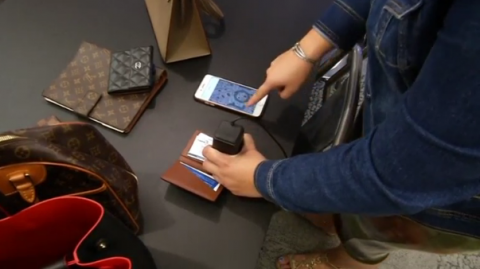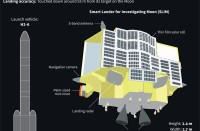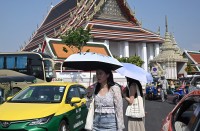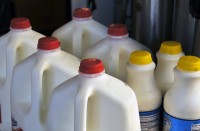
NEW YORK, United States (Reuters) — In a designer-obsessed world, counterfeiters run amok.
New York startup Entrupy has found a way to fight the fakes with a handheld microscope camera that lets users with their smartphones detect the difference between real Gucci, Chanel, Hermès and Louis Vuitton luxury handbags and frauds.
“Nobody’s ever done this before, right?” said Entrupy’s co-founder and CEO, Vidyuth Srinivasan.
“So we had to catalog the world in a microscopic way and first understand if there’s actually a difference. Turns out there was, so that kind of egged us on a little bit,” Srinivasan said.
Srinivasan and his team went into retail stores, buying and returning handbags just so they could scan what the real bags looked like on a microscopic level, from the stitching to the monogram details, to the rise and ebb in the grain of the leather.
Some of them got blacklisted from stores.
They accosted friends and appealed to second hand shops all over the world to let them scan into their database what vintage and current authentic luxury handbags and goods looked like.
“It works with a mix of microscopy and machine learning, or AI, as it’s called today,” Srinivasan said.
“And what we do is we essentially collect a massive – I’m talking tens of millions of microscopic images – we collect microscopic image data from physical items. So in a sense we’re cataloging the world of physical objects in a microscopic way and then we’re teaching computers to understand the differences in how authentic objects are made, versus how fakes are made,” he said.
Srinivasan said Entrupy has a 98.5 percent accuracy rate in detecting the real goods from the fakes with a false-positive rate at about 0.1 percent.
“You know you can’t say that, ‘hey this Rolex watch is about 80 percent authentic,’ it’s either real or it’s not,” he said.
In only a year since Entrupy’s launch to the public, they’ve acquired 200 clients made up of businesses that include second-hand shops and online retail stores.
The device is leased for an initial fee of $299 (USD) with monthly plans starting from $99 and can detect from 11 brands that include Gucci, Chanel, Hermès and Louis Vuitton.
Srinivasan said his handheld microscope camera, which scans the item by taking photographs of multiple regions then magnifying the image 260 times, is meant for businesses for now, and not really meant for an individual consumer.
Could counterfeiters potentially game the system by taking advantage of Entrupy’s device?
“We collect millions of images across every single skew. So the depth of data that is available within the database that we use to classify and train the computers is way more than what counterfeiters would have access to, even if they were to use our device to keep trying to check and match. Ultimately it comes down to the fact that if you are not the manufacturer and if you’re not manufacturing in the exact same way with the exact same materials, exact same workmanship, and even something as detailed as the depth of a hardware stamp, then you are going to be detectable,” he said.
Counterfeit and pirated goods accounted for up to 2.5 percent of world trade, or as much as $461 billion (USD), according to last year’s figures from the Organisation for Economic Cooperation and Development (OECD).







